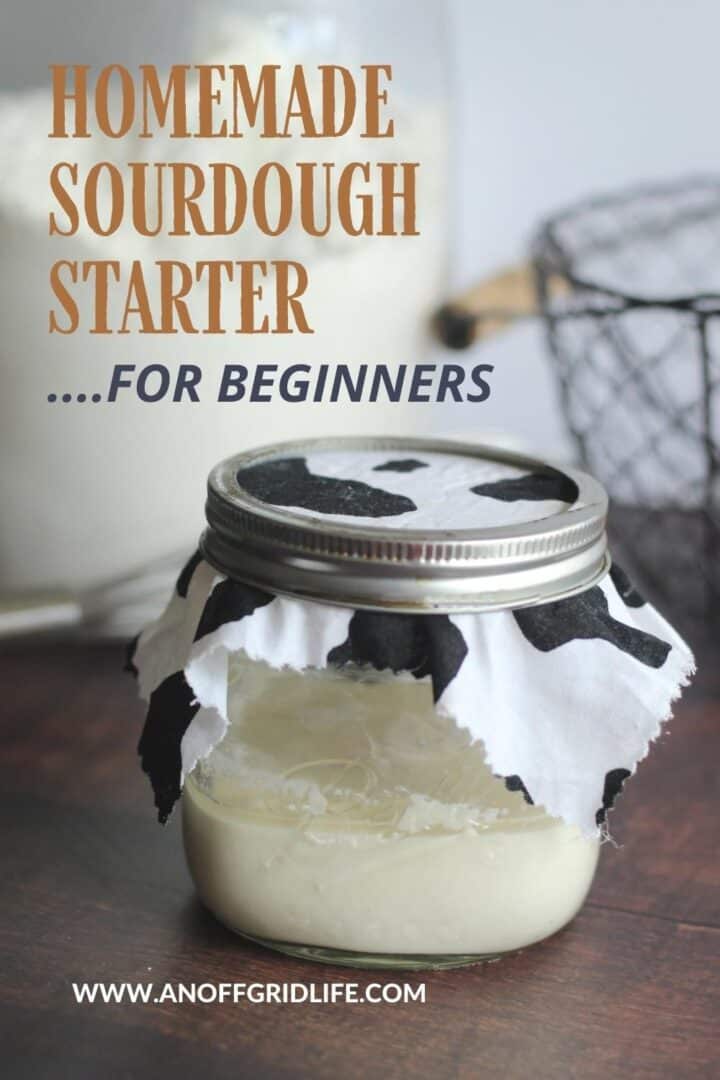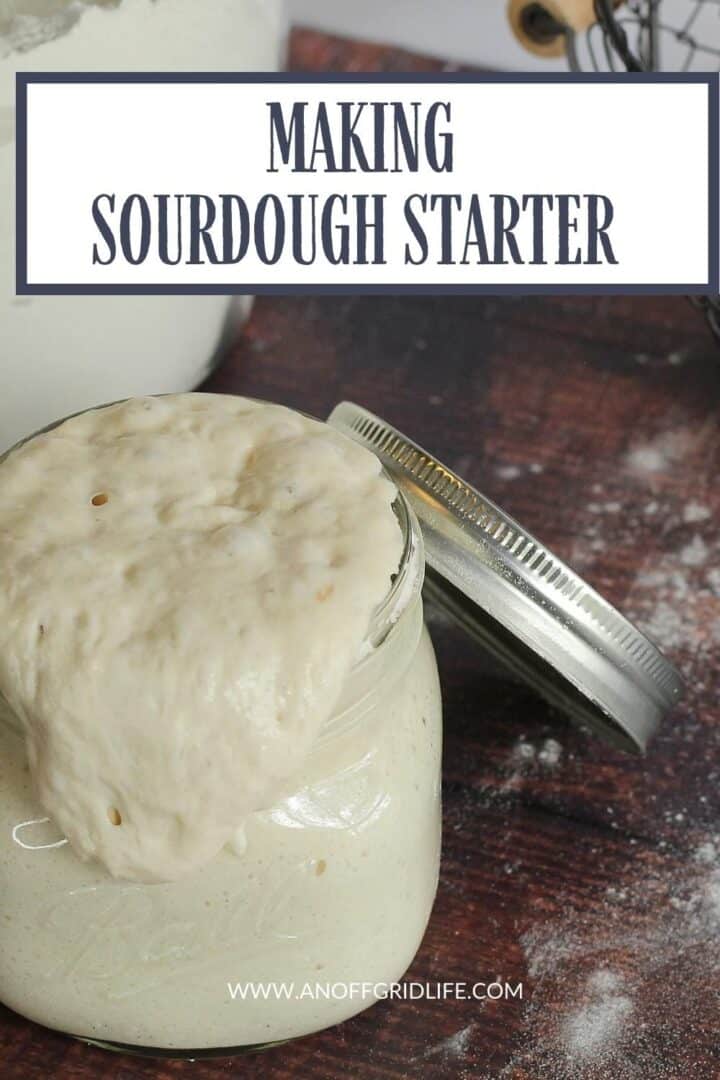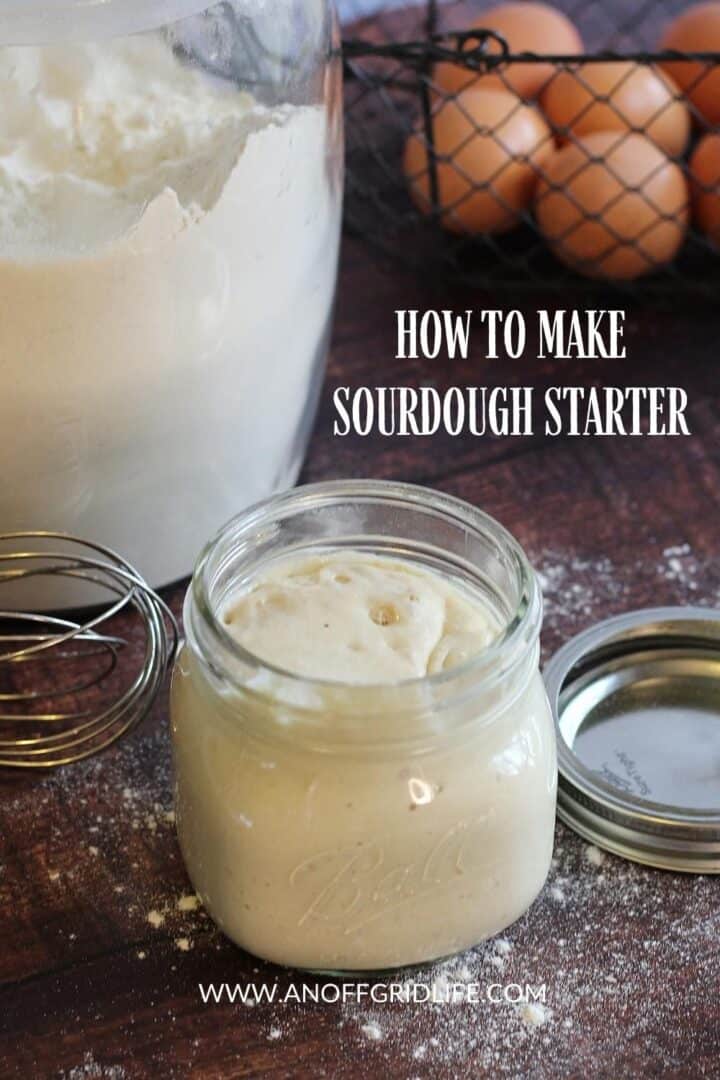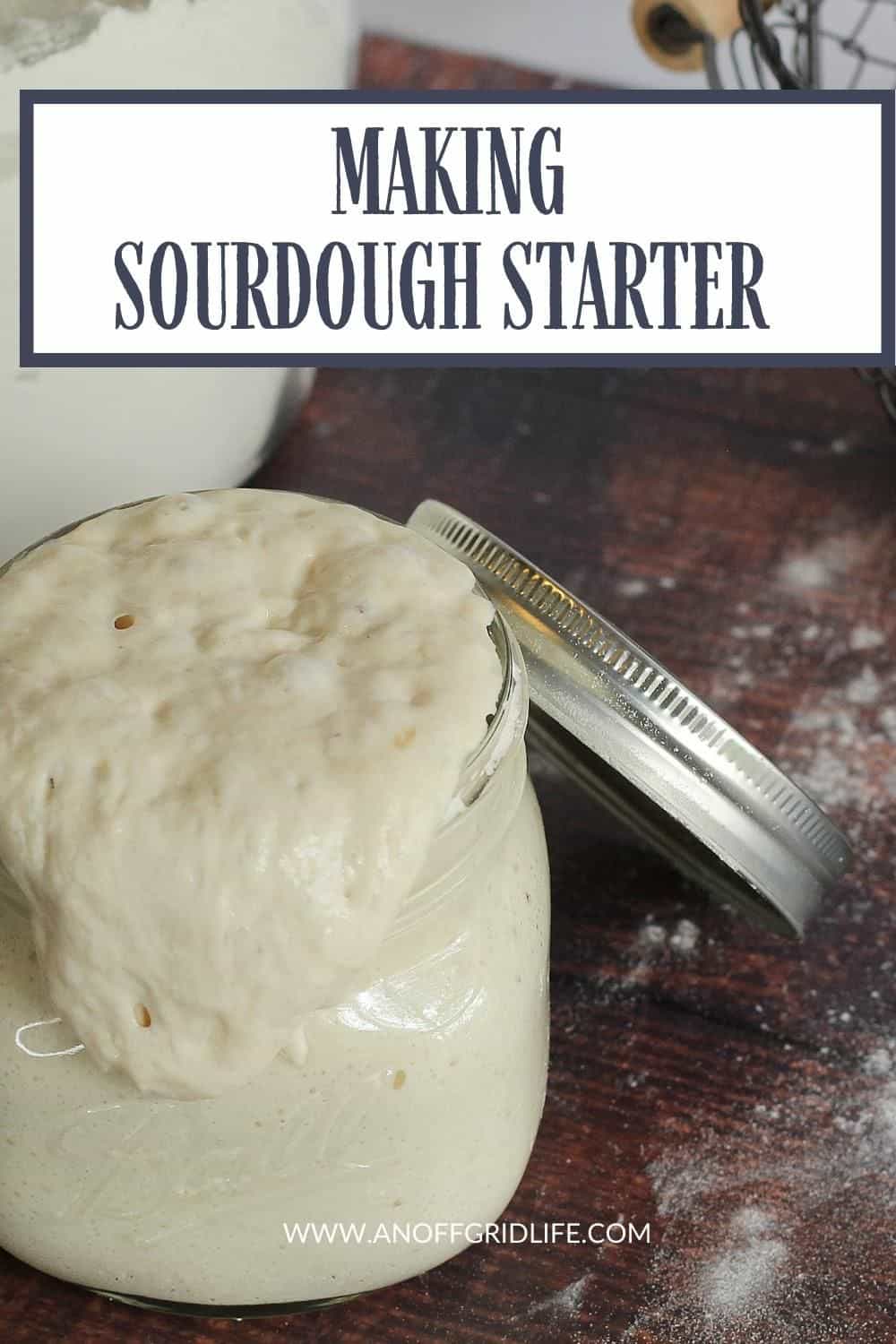There's nothing quite like a fresh loaf of sourdough bread, bagels, pizza dough, muffins, pancakes, or english muffins. And while all things sourdough have led to an explosion in storebought sourdough starters, they aren't necessary.
Making a homemade sourdough starter without yeast is simple. Here's how.

Estimated reading time: 7 minutes
There are a lot of great sourdough recipes to enjoy, and luckily making your own sourdough starter is so easy.
Starting sourdough is just the simple process of making wild yeast by fermenting flour and water.
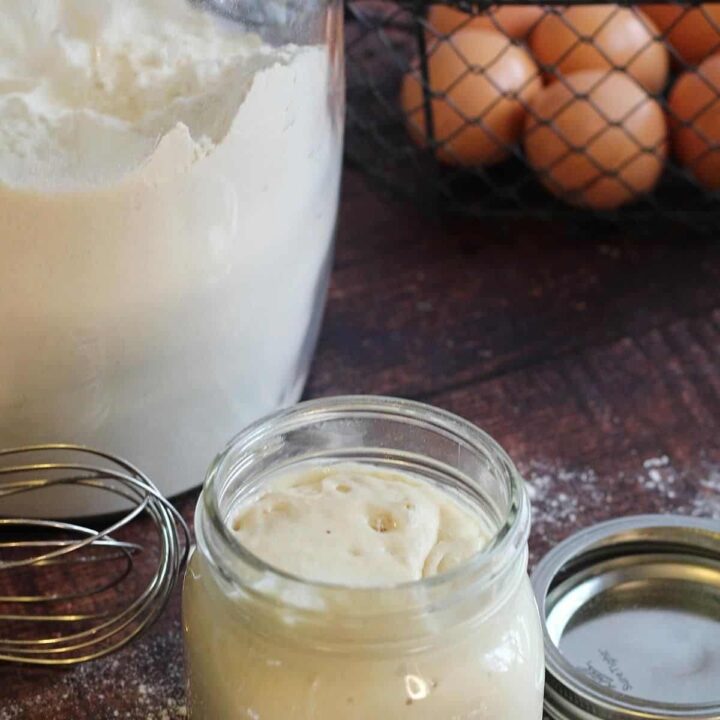
Now, maybe you're interested in getting started homesteading.
Or maybe you're just a bit uneasy about the state of the world these days. You're ready to stock your shelves. You're learning to become more self-reliant.
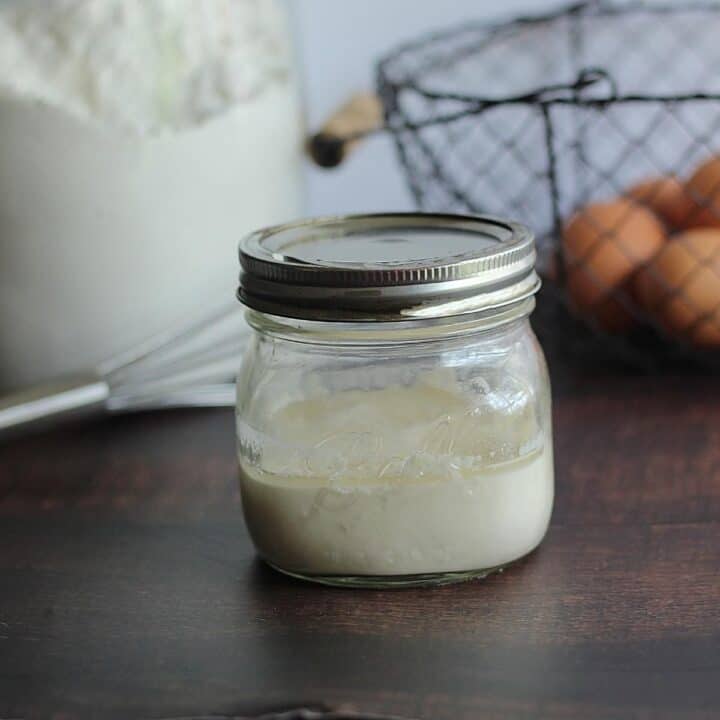
If so, making a homemade sourdough starter without yeast is a great small homestead project to start with. And it's also a great homesteading and homeschooling activity to try in any season.
There is a wonderful satisfaction from making this homemade sourdough starter recipe without using yeast.
Sourdough Starter Recipe Supplies
Here's what you'll need to make your own yeast-free sourdough starter from scratch, the way the Amish do.
Supplies Needed
- Unbleached all-purpose flour
- Water (preferably non-chlorinated fresh water)
- Large mason jar or another clean glass container with a lid
Pretty simple, right?
Old-Fashioned Sourdough Starter Recipe
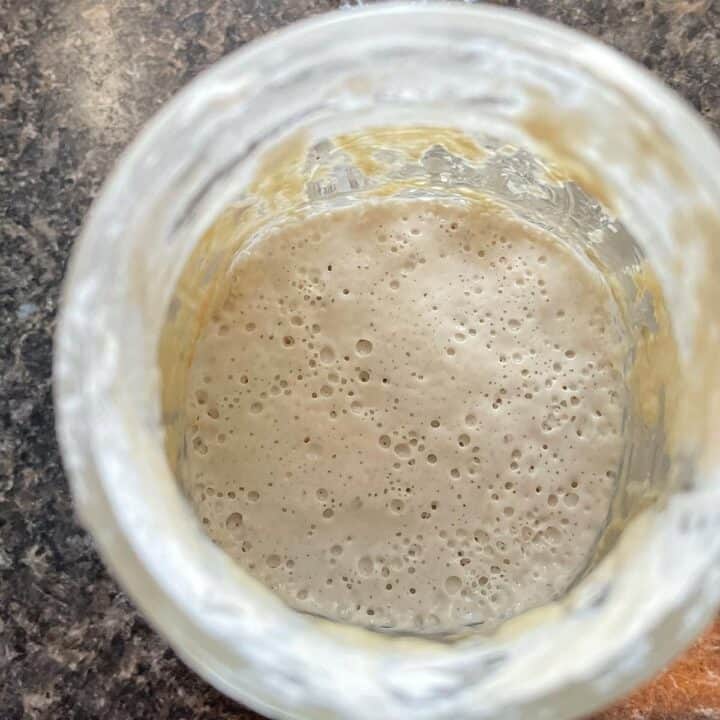
Making sourdough starter is pretty simple, even if you're a beginner. Remember, this is what the pioneers made and carried across the country for griddle recipes and more.
Day 1
On the first day combine ½ cup of water and ¼ cup of unbleached all purpose flour in your glass jar. Take note - the mixture will be thick.
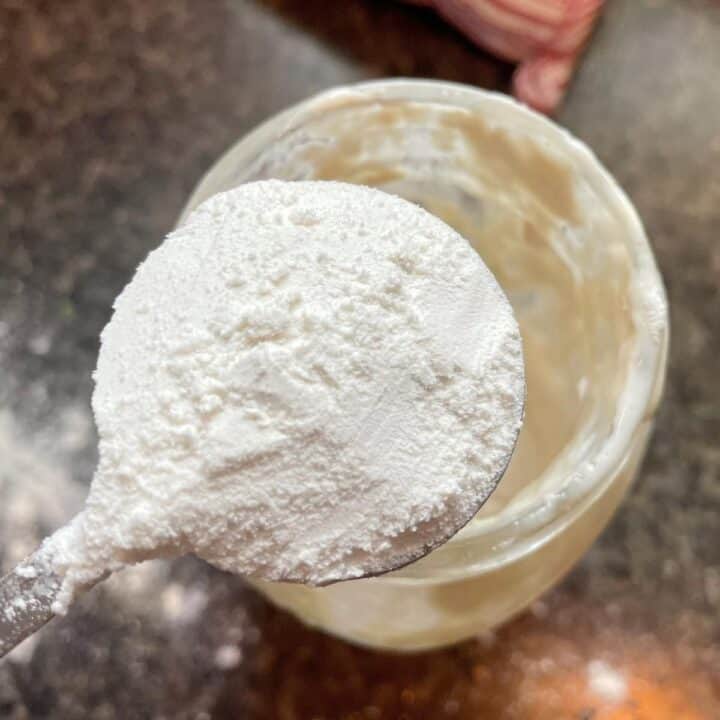
I prefer to use a wooden spoon or rubber spatula to a metal spoon, if the spoon doesn't fit in your jar just flip it. And then use the handle to stir it.
Day 2
Don't do anything. Just admire it.
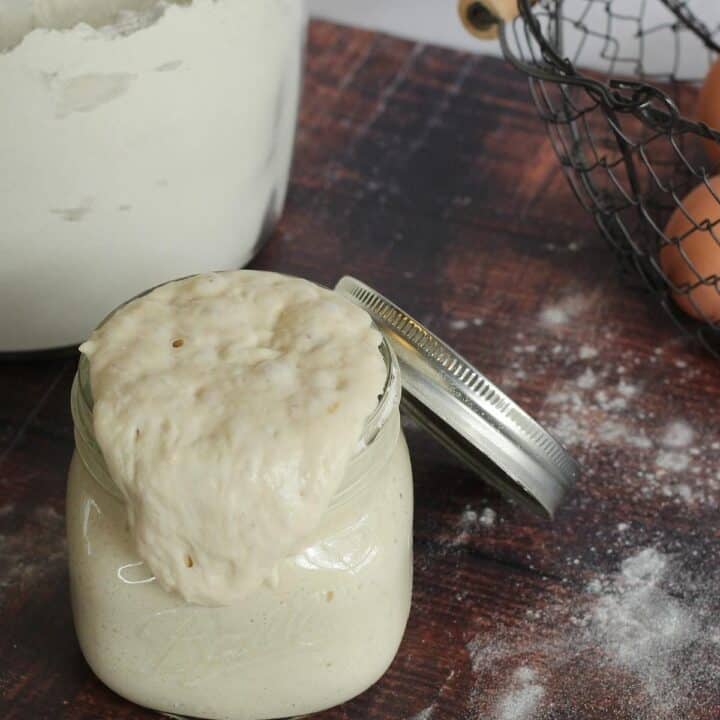
Wait 2 days before you do anything else….
Day 3
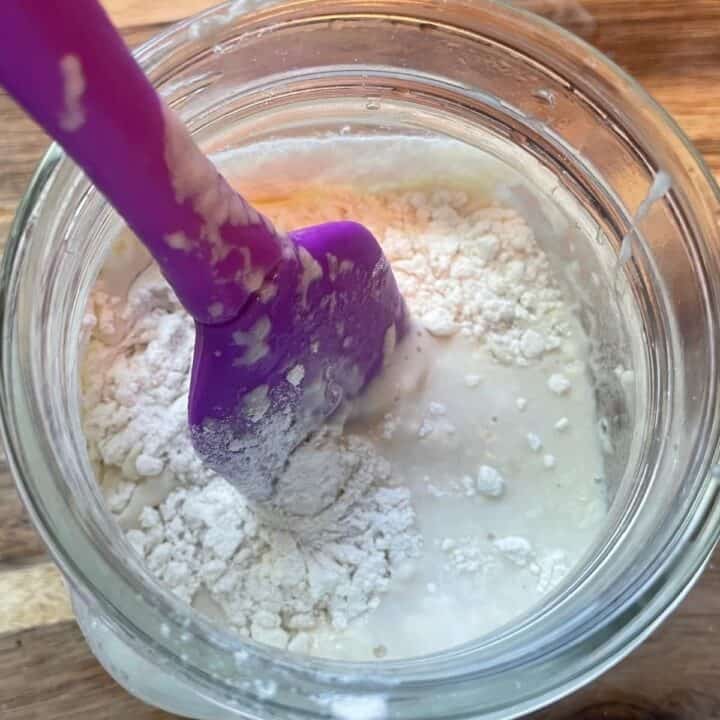
On day 3 you should notice some dark liquid floating on top. this is the “hooch”.
It smells a bit like stinky socks.
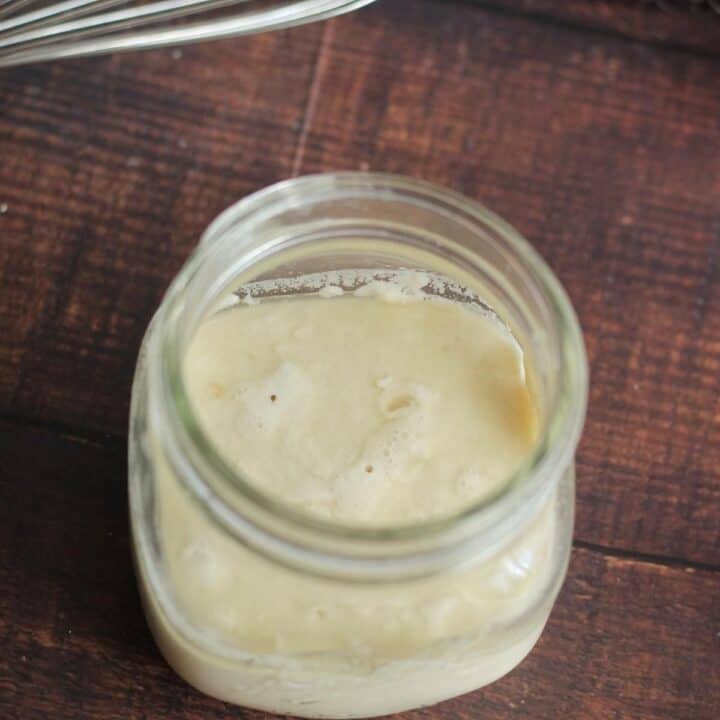
And that's perfectly fine. This is just the mixture telling you that it is ready to be fed now.
Scoop out half of the mixture. Either throw it away or use it in your favorite sourdough discard recipes, like pancake or other batter.
(Note: I'm working several different sourdough muffin recipes. Last month I made this sourdough discard banana muffin recipe.
We also loved this sourdough discard chocolate chip muffin recipe.
Stir in another ½ cup of flour and ¼ cup of water.
Come to think of it, you might want to learn how to make dehydrated sourdough starter. That way you can save it for the long-term.
Days 4 Through 7
Every day from day 4 to day 7 repeat that process. And you may have to do this for up to 14 days, depending on when your starter is ready.
So you're going to scoop out half the mixture and add another ½ cup of flour and ¼ cup of water.
Day 7
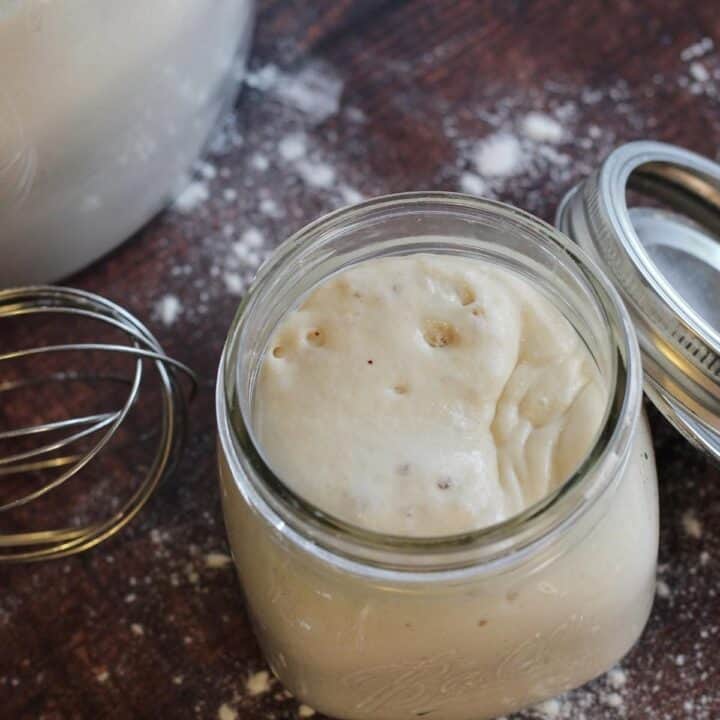
Maybe Day 8. Or later...
By day 7 your homemade starter should be ready. It will be full of bubbles and have doubled in size. It should look fluffy.
If your homemade sourdough starter is NOT, don't panic.
Sometimes it just takes a little longer.
Once the starter has reached the ready stage, it's time to transfer it to a fresh jar.
FAQs about yeast-free sourdough starter
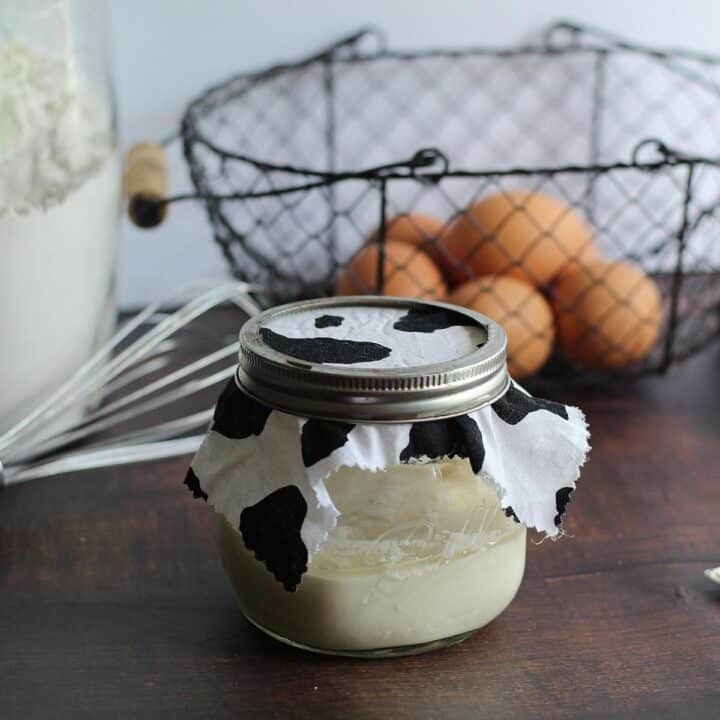
How should you store your sourdough starter?
If you plan to use your starter in recipes twice a week or more, just leave it out on the counter. And remember to continue to discard half the starter and feed it daily.
On the other hand, maybe you're just planning to do a little Saturday baking.
In that case, keep your sourdough in the fridge, and feed it weekly.
When you are ready to use it, remove it from fridge the night before you plan on having a baking session.
And remember to feed it while it's at room temperature.
How long does a homemade sourdough starter last?
A good homemade sourdough starter can last for years. Or decades. Literally.
A few years back, CBC ran a story about a Yukon woman with a homemade sourdough starter over 120 years old. Amazing!
Can I make sourdough starter with whole wheat flour?
Absolutely. Just sub in whole wheat or rye flour for the all purpose flour. In fact, I find that using whole wheat flour at the very beginning helps get my starter going faster. And then I alternate feeding it with all-purpose flour every other day.
Why won't my sourdough start bubbling?
In my experience, my starter doesn't start bubbling when it's too cold. Try moving the glass jar to a warmer location, such as in a cold oven, beside a wood stove, or even in a microwave. (Don't microwave it. Just store it there.)
Can I freeze sourdough starter?
Yes. Now, I've read that you can freeze sourdough for up to a year. But honestly, I've never done that. The only time I've frozen sourdough starter was by accident when I left it out on the back porch and the temperature suddenly dropped.
I just brought it into the kitchen and let it thaw slowly. It was just fine.
Need more answers about sourdough starter for beginners? Ask away!

How to Make Sourdough Starter Without Yeast
Don't buy expensive pre-made sourdough starters. Instead, learn how to make a delicious, yeast-free homemade sourdough starter the old-fashioned way -with just two ingredients and some patience.
Materials
- Unbleached all-purpose flour
- Water
Tools
- Large mason jar or other glass container with a lid
- measuring spoons
- measuring cups
- cheesecloth OR coffee filter
- rubber band
Instructions
- On the first day combine ½ cup of water and ¼ cup of unbleached all-purpose flour in your glass jar, the mixture with be thick. I prefer to use a wooden spoon or rubber spatula to a metal spoon, if the spoon doesn't fit in your container just use the handle to stir it.
- Wait 2 days before you do anything else….
- On day 3, you should notice some dark liquid floating on top, this is the “hooch”, it smells a little like stinky socks. This is just the mixture telling you that it is ready to be fed now. Scoop out half of the mixture and either throw it away or use it in a pancake or other batter. Stir in another ½ cup of flour and ¼ cup of water.
- Every day from day 4 to day 7 (or up to maybe 14 depending on when your starter is ready) you are going to repeat the same process- scoop out half and add another ½ cup of flour and ¼ cup of water.
- By day 7, your starter should be ready -full of bubbles, doubled in size, and fluffy. If not, don’t panic, sometimes it just takes a little longer.
- Once the sourdough starter has reached the ready stage, transfer it to a fresh jar.
Recommended Products
As an Amazon Associate and member of other affiliate programs, I earn from qualifying purchases.
Like this post? Save it, share it, and read it!
